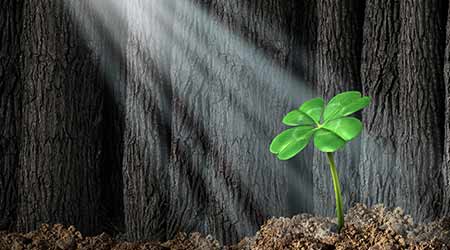Why Green Building is Synonymous with Resilience
As severe weather increases, it's more crucial than ever to focus efforts on both sustainability and resilience. Luckily, they're near perfect complements to each other.
By Sarah Stanley, Director of Communications, U.S. Green Building Council
According to the National Oceanic and Atmospheric Administration (NOAA), in 2018, the U.S. experienced 14 different events ranging from hurricanes and winter storms to drought and wildfires. The cost of those events: $91 billion.
The frequency of severe weather coupled with the staggering costs associated has made resilience planning increasingly important for the building and construction industry. Beyond sustainability, green building certifications, like LEED and RELi, are driving resilience-enhancing designs, technologies and methods. For the past 20 years, LEED has provided a tried and true path to designing, building and operating spaces that conserve resources, reduce carbon, prioritize safer materials and improve indoor environmental quality for the people within. Factoring resilience into these plans is a clear extension of that work and has been a part of USGBC’s ongoing development of LEED.
Emphasizing resilience within buildings and interior spaces can help businesses and communities cope with local environmental challenges. These challenges look different depending on where you live, but the effects can be equally as devastating, both personally and economically. Over the years, the work of USGBC members, partners and LEED users has underscored a collective commitment to building back better, in a manner that helps communities plan, prepare, absorb, recover from and adapt to adverse events.
In 2015, USGBC introduced a series of resilient design pilot credits in an effort to bring this topic to the forefront of project design. In 2018, the credits were revised to improve effectiveness, reflect feedback and harmonize them with RELi. The credits are available to all new construction projects looking to certify through LEED v4 or LEED v4.1 and include:
• Assessment and Planning for Resilience: To earn the credit, teams must identify risks and potential vulnerabilities related to the effects of climate change. Risks that must be considered include sea level rise, extreme heat and more intense winter storms.
• Designing for Enhanced Resilience: This ensures that risk-related information collected from the above credit is taken into account through mitigation measures. Project teams must address either one or two of the top haszards.
• Passive Survivability and Back-Up Power During Disruptions: This centers around the concept that buildings should be able to safely shelter occupants during a power outage, as well as be able to provide back-up power.
LEED advocates for resilience-enhancing strategies that include durable materials, thoughtful site selection, rainwater collection, demand response, grid islanding, energy efficiency and more. Communicating the impact of that work is also a vital part of ensuring people are ready in the face of a serious event. USGBC recently released a Living Standard Action Toolkit to help guide companies and individuals and engage them in talking more about the impact this work has on human beings.
USGBC actively works with policymakeres on resilence strategies, including the Resilient Cities Summit, and has highlighted several examples of resilient design in the Profiles of Resilience resource. One project was GAF’s headquarters in Parsippany, N.J., which was the first building to earn a LEED pilot credit for resilient design. GAF wanted to ensure the building’s resilience in the event of a severe hurricane, similar to what the area experienced during Hurricane Sandy in 2012. The building’s features contributed to its hurricane-readiness and include: flood preparations and backup capabilities to enable operations during long-term outages; roofing that meets FEMA Wind Zone II velocities; an assessment of floodway mapping to understand flood-prone areas; and a disaster recovery plan that outlines how occupants would be communicated with in the event of a disaster.
GAF is one example of how LEED users are bringing resilience into the conversation. In San Francisco, the recent wildfires also make the case for resilience planning and how buildings can be a haven for communities when air quality is a concern. The topic will remain an important one and is already expanding to include how resilience and green building can be used to support more vulnerable communities. To learn more about resilience work, visit USGBC’s Center for Resilience and register for the Resilience Summit at this year’s Greenbuild conference in Altanta Nov. 19-22.
Related Topics:












